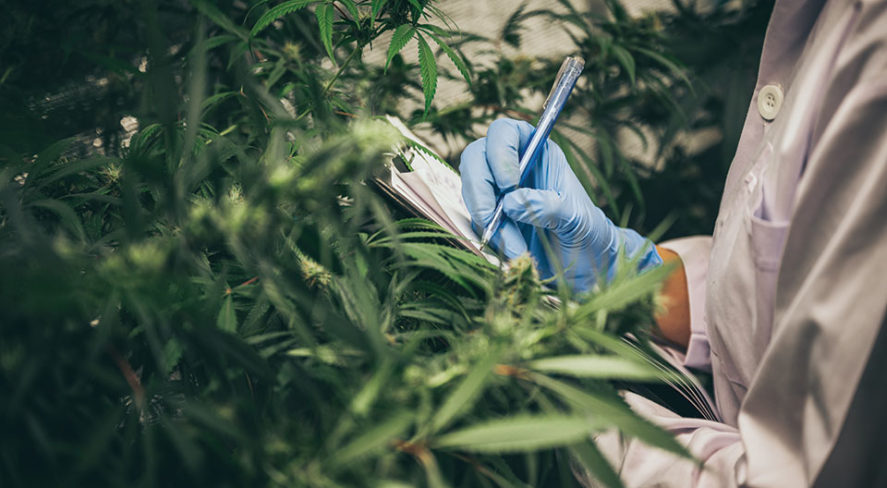From Seed to Sale: Securing a Cannabis Operation Poses Unique Challenges


The cannabis industry is one of the fastest-growing verticals in the United States, offering a variety of opportunities for businesses seeking to capitalize on continued state deregulation. Amid global shutdowns, shelter-in-place orders, loss of jobs and the ever-present threat of illness, cannabis sales skyrocketed in 2020. A study conducted by Leafly using state tax and revenue data showed cannabis sales were up $7.6 billion over 2019 to $18.3 billion – a 71 percent increase. To date, 19 states have legalized marijuana recreationally, while 36 states have medicinal programs. Some jurisdictions are just now issuing licenses, and more are coming online.
Marijuana’s continued status as a Schedule I drug at the federal level, though, certainly does not make it an easy landscape for prospective newcomers to navigate. Whether already operating a facility or planning to open a dispensary, processing or grow operation, there are many regulations to keep in mind – some of which prescribe electronic and physical security requirements. This article describes a few ways that cannabis grow operators, dispensaries and processors can leverage the benefits of a video management system (VMS) in their overall open platform security plan.
Licensing Requires a Security Plan
Like any business, a cannabis operation requires certain licenses, approvals and audits before opening the doors. While regulations and security requirements differ across states, almost all require some form of electronic alarm and surveillance system, along with audit trails, whether paper or electronic, that must be archived.
Every location that has legalized medical or recreational marijuana has stringent licensing requirements, whether for grow operations, edibles manufacturing, processing plants, dispensaries or transportation and the newer delivery services. While these regulations may differ in details, in almost all cases, they include having an acceptable security plan in place. These security plans are heavily weighted in the licensing application process. If the plan is found to be lacking, the business loses points. If the overall grade/number fails to meet the threshold, the business will not be issued a license. This puts pressure on the prospective operation to have an effective, well thought out security plan in place, describing the overall system architecture, including alarm, video and, in some cases, access control that allows the integration of other solutions. In addition, cannabis retailers need an audit trail working in conjunction with seed-to-sale (STS) compliance software, to ensure cannabis operations comply with regulatory requirements.
Video Surveillance Required
While rules differ state to state, nearly all states that have fully legalized cannabis require video surveillance 24/7 throughout the entire facility. An average dispensary might have up to 40 cameras. A large-scale grow operation could have more than a hundred cameras to ensure proper surveillance of the product and the harvesting process. No matter the business function, the perimeter needs to be protected and there can be no “dead zones” where a camera’s field of view is obstructed. All hard and soft potential physical security threats (customers, employees, delivery people, packages) entering the premises must be tracked using the video system, along with any human or product movement that occurs within the facility.
To have a compliant security system, operators must have archived video footage in the event of an audit by compliance officers. Regulations vary by state, but video retention times of 45 days, 90 days or even 120 days are common. For the owner of a business, this means everything is recorded – from the transfer of product to individual product sales and storage – so a robust video solution to archive the footage is a necessity.
If a grow operation moves plants from one end of a facility to another but does not have video footage of the move, it could be a red flag for auditors. While constant video surveillance ensures all operations are compliant, it can also show when crimes – such as employee theft – are committed. Using video systems, operators can more quickly reconcile inventory and determine if there are any discrepancies. Cameras can also help detect internal theft when items are weighed, as they can alert security personnel if the documented weight of a product does not match what it is estimated to be.
Seed-to-Sale Tracking
Seed-to-sale is the process of tagging each and every cannabis plant with a barcode or radio-frequency identification (RFID) marker that allows tracking from a grow operation (seed) to cultivation, processing and final sale. For cannabis customers, everything they buy has a batch number, complete with the lot and date – allowing them to learn the full lifecycle of the product. Such tracking measures exceed those in a pharmacy, where customers rarely find such specifics.
Using a video system with STS integration can drastically reduce the burden of mandatory data tracking on grow operators and dispensaries, as the camera can record an image of a plant’s barcode as it passes by on its way to processing. The image is scanned and tracked with a barcode reader. While this information is also captured in the seed-to-sale software, video images provide a valuable individual record of each of these transactions that can be easily retrieved when needed for a compliance audit or investigations.
Video Analytics Optimize Dispensary Security
Cannabis retail dispensaries have faced some of the same challenges from COVID-19 as other retail markets, including long socially distanced lines and decreased occupancy levels. Video analytics can improve operations by using people counting to speed up queues and assist management in ensuring the facility is properly staffed. Video analytics can also be used to monitor the entire facility or operation, inside and out, ensuring the space is secure.
Additionally, integrations with point of sale (POS) and seed-to-sale systems assist dispensaries with reporting. For example, if a customer buys several products, it will be tracked in the POS/STS software and the facility can use the surveillance system that captured the metadata to ensure compliance, complete with an event-stamped audit trail.
Remote Video Access and Investigations
Remote access to systems is in high demand across all sectors of the cannabis space. Even when they are not on site, cannabis operators can have instant visibility into their facilities using the surveillance system. With today’s technology, they can have access to video anywhere in the facility via a mobile device. They will be able to see if someone has entered the site after hours, or if there is an incident that triggers an event in the alarm, access control or surveillance system. This gives operators the ability to decide whether or not to engage internal or external resources to deal with the issue. Additionally, having remote, real-time access to the security and surveillance system can help cannabis operators keep a finger on the pulse of their operations.
As an example, many grow operations are located in remote areas not served by traditional copper or fiber ISPs, or they have facilities across multiple states, so it is vital to have a system that can provide an overview of an entire operation from any location while respecting the pipeline, even if that pipeline is a satellite or 4G cell network.
Cash Management
It is no secret that cash management is a major challenge for cannabis business operators. As cannabis is still illegal under federal law, most banking institutions are hesitant to venture into the market. As a result, cannabis is still largely cash-only, which presents some obvious security risks. Having large amounts of cash onsite provides an additional incentive to ensure that a comprehensive video surveillance and security solution is in place. Dispensaries must constantly capture POS register information and the entire point of purchase scene, including images of the buyer. Additionally, the VMS, coupled with edge, internal or third-party analytics, can notify local or remote personnel of any suspicious behavior, weapons or other objects that might indicate a potential threat. They can also monitor and record the movement of all cash and product through the entire facility.
Consult a Professional
Security challenges existed long before the COVID-19 pandemic and are likely to continue into the foreseeable future, as more states legalize recreational cannabis. An influx of sales and customers caused by the pandemic means cannabis facilities face even more pressure to ensure facility security and regulatory compliance. Navigating the strict security regulations imposed on cannabis businesses requires a well thought out plan and a flexible solution that can provide enterprise-level surveillance features and scalability. No matter what state the operation is located in, a security system with the capacity to store video footage and provide remote monitoring capabilities is a must.
Operators looking to open a facility should consider seeking guidance from a security consultant or systems integrator who is well versed in the cannabis space and familiar with the relevant regulations and procedures. The selection of a solutions provider that offers a flexible and open architecture approach to security can help to ensure the business’ lifecycle compliance from seed to sale.
